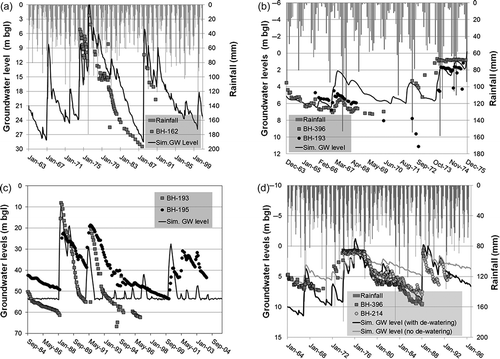Figures & data
Fig. 1 Catchment-scale processes associated with surface water and groundwater interactions and some of the key questions related to understanding and modelling.
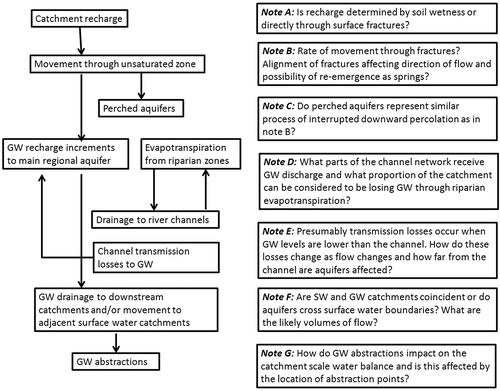
Table 1 Components and parameters of the Pitman model associated with SW/GW interactions.
Table 2 Parameters of the daily version of the Pitman model used for the Ecca River example (ZMIN and ZMAX are parameters of the surface runoff function, while R is part of the evapotranspiration routine).
Fig. 2 Uncertainty analysis results of the application of the daily version of the model for the Ecca catchment.
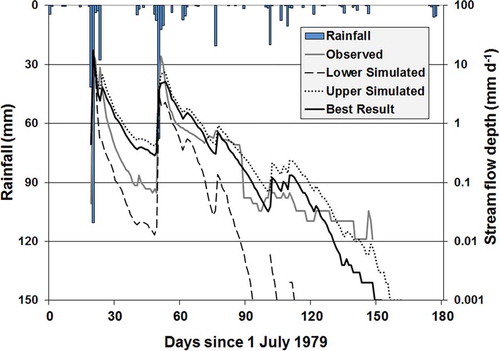
Table 3 Parameters and objective functions for the “best” Sabie River ensembles for each test period compared with the full time series of observed data (fixed parameters; POW = 2.5, GPOW = 3.5; SL = 0, SLG = 0).
Fig. 3 Mean monthly simulated components of the total baseflow (interflow and groundwater drainage) for the two Sabie River example scenarios.
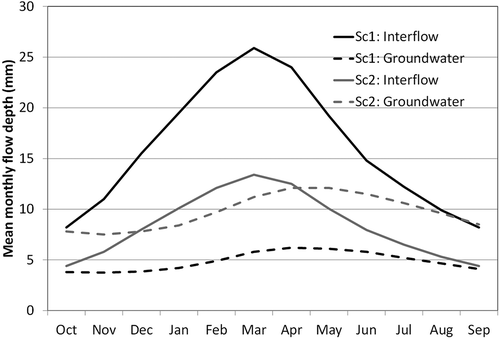
Table 4 Uncertain parameters used for the Breede River catchment.
Fig. 4 Breede River uncertainty results: (a) recharge versus an index of total GW loss; (b) comparison of the two abstraction volumes; (c) impact of GW gradient parameter; and (d) impact of riparian strip parameter.
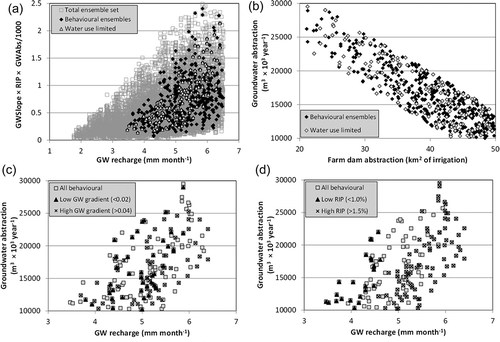
Fig. 5 Relationship between recharge and riparian strip evapotranspiration parameter (RIP) for the Crocodile River tributary for ensembles with the 50th FDC percentile equal to zero (the open squares are for RIP values of ≤ 0.6%).
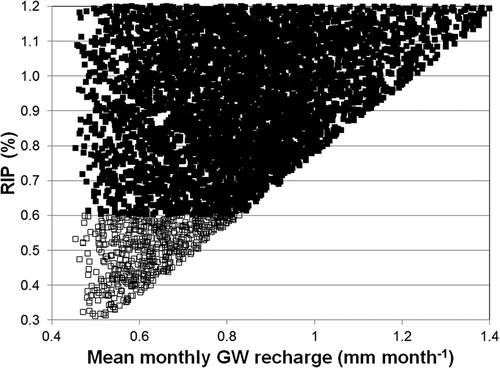
Fig. 6 Groundwater conditions for the Gamagara River example: (a) model concepts; and (b) real conditions.
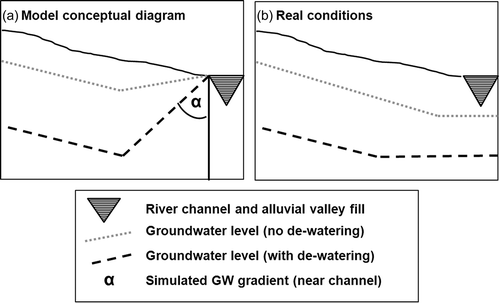
Fig. 7 Gamagara River results (simulated and observed groundwater levels: (a) sub-catchment A; (b) sub-catchment C without de-watering; (c) sub-catchment C with de-watering; and (d) sub-catchment D with and without de-watering (m bgl: metres below ground level).
